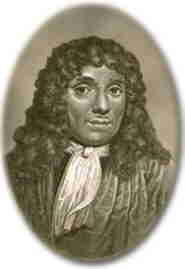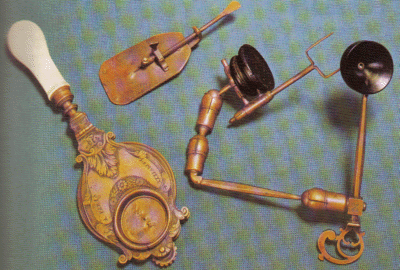 SKC Films Library SKC Films Library |
|
|
| SKC Films Library
>> Science >> Natural Science |
 Antonie
van Leeuwenhoek Antonie
van LeeuwenhoeklA' vun hook', the first person to study protozoa, bacteria, and other microscopic organisms Antonie van Leeuwenhoek was born on October 24, 1632, in Delft, Netherlands, where he learned the drapery trade and owned his own shop for a time. In 1660 he was appointed City Chamberlain, and the financial security of this position enabled him to devote himself more to his outside interests.
Using his hand-crafted microscopes, Leeuwenhoek studied such diverse materials as stagnant water, teeth scrapings, blood cells, muscle fibers, and spermatazoa. And, although he has been criticized for a lack of formal scientific method in pursuing and recording his research, his observations and deductions have been proven accurate to a remarkable degree. Leeuwenhoek was working at a time when the theory of spontaneous generation was a generally accepted scientific belief. It was thought, for example, that maggots were bred out of rotted meat, that fleas were generated by sand or dust, and that weevils came from wheat stored in granaries. Leeuwenhoek, however, showed that all these creatures actually reproduced themselves, that they hatched from eggs fertilized by the male and laid by the female in the manner of other insects. He also discovered that aphids reproduce by parthenogenesis (without male fertilization of eggs), and showed that eels did not spring out of dew or shellfish out of tidal mud. On studying rainwater samples, Leeuwenhoek observed tiny organisms that he called "animalcules," and concluded that these animalcules could be "carried over by the wind, along with bits of dust floating in the air." He found similar animalcules in samples taken from human mouths. The earliest representation of bacteria appears in a drawing by him which was published by the Royal Society (of London, England) in 1683. The first accurate descriptions of red blood cells and of the spermatazoa of men, dogs, and insects are contained in correspondence between Leeuwenhoek and the Royal Society from 1673 until his death. Most of his discoveries were made known to the scientific world through these informal letters, and 14 volumes of them were eventually published. He was elected a Fellow of the Royal Society in 1680, and in his will he bequeathed to the society a sample of his lenses. He died in Delft on August 26, 1723. |
SKC Films Library >> Science >> Natural Science This page was last updated on 01/10/2017. |
 Leeuwenhoek came to his scientific studies
through his interest in lens grinding, by means of which
he developed a microscope of high efficiency. The
microscope he developed owed almost nothing to the
compound microscope then widely available in Europe. The
compound type has two or more lenses arranged in sequence
to produce an enlarged image. Because of the difficulty
of making sufficiently pure glass at that time, however,
microscope lenses distorted the image and tended to
create fringes of color around the edges of the objects
being observed. To get around these problems, Leewenhoek
concentrated on producing single lenses of high quality
and short focal length, which he mounted singly between a
pair of thin brass plates. Through tedious hand-grinding
techniques, he prepared hundreds of lenses with
magnifying powers up to 270 diameters. Some of the lenses
he made were as small as a pinhead. Leeuwenhoek's method
of lighting his minute samples under the microscope has
never been determined.
Leeuwenhoek came to his scientific studies
through his interest in lens grinding, by means of which
he developed a microscope of high efficiency. The
microscope he developed owed almost nothing to the
compound microscope then widely available in Europe. The
compound type has two or more lenses arranged in sequence
to produce an enlarged image. Because of the difficulty
of making sufficiently pure glass at that time, however,
microscope lenses distorted the image and tended to
create fringes of color around the edges of the objects
being observed. To get around these problems, Leewenhoek
concentrated on producing single lenses of high quality
and short focal length, which he mounted singly between a
pair of thin brass plates. Through tedious hand-grinding
techniques, he prepared hundreds of lenses with
magnifying powers up to 270 diameters. Some of the lenses
he made were as small as a pinhead. Leeuwenhoek's method
of lighting his minute samples under the microscope has
never been determined.